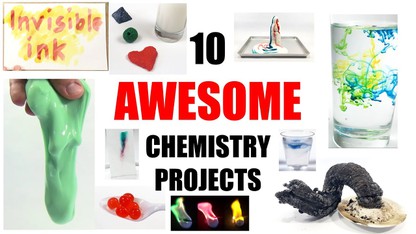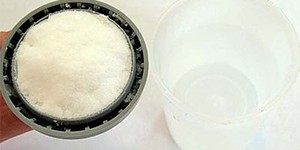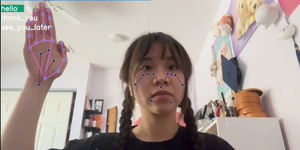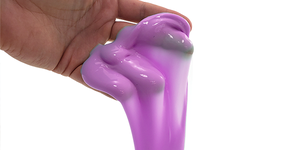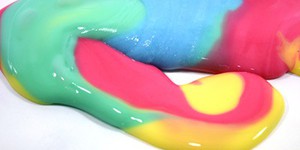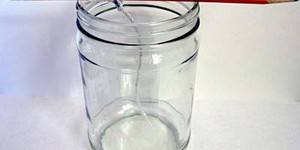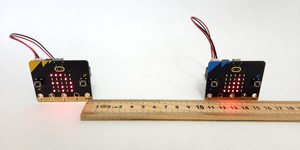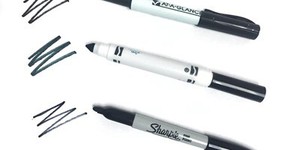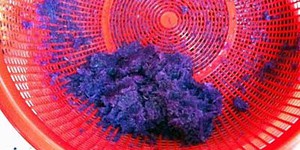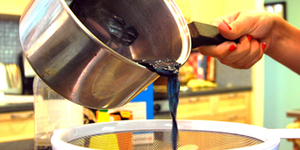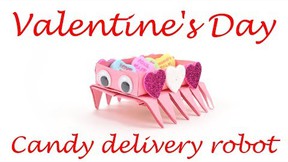Third Grade, Chemistry Science Projects (25 results)
An experienced chemistry professor used to say that it took about one explosion per week to maintain college students' attention in chemistry lectures. At that rate, we'd get in pretty big trouble with a lot of parents and teachers! Don't worry, we still have lots of bubbles, fizzes, bangs, and color changes for you to explore.
|
Select a resource
Coding Projects
Sort by
|
Watching a spacecraft launch is an amazing experience. It is thrilling to see it lift off and escape Earth's gravity. Did you know that it takes a chemical reaction to get a spacecraft into space? Every time you see a one blast off, you are watching chemistry at work. In this chemistry science fair project, you will also get to blast an object into the air. You will not be using the same fuel that NASA uses for the rockets that launch their spacecrafts; instead, you will use two simple…
Read more
"Plastic made from milk" —that certainly sounds like something made-up. If you agree, you may be
surprised to learn that in the early 20th century, milk was used to make many different plastic
ornaments —including jewelry for Queen Mary of England! In this chemistry science project, you can figure out the best recipe to make your own milk plastic (usually called casein plastic) and use it to make beads, ornaments, or other items.
Read more
New
Can AI understand human language? In the future, AI could aid in emergency interpretive service in the hospital when translators aren't available. But can current AI algorithms understand non-verbal languages like sign language? In this science project, you will test whether AI can learn sign language gestures or phrases to see if it can be used for interpretation.
Read more
Have you ever wondered how fun toys like Silly Putty®, Gak™, and Slime™ are made? These products are so much fun because of the properties of polymers, which make them delightfully bouncy, stretchy, sticky, moldable, breakable, hard, soft, and just plain fun! In this science project you can be the developer of your own slime product by changing the amount of a key ingredient. By observing the physical properties of your results, you can choose the best recipe for your new…
Read more
There are many different kinds of slime out there. Some slime is runny and liquid-like; other slime is thick and rubbery. Some slime glows in the dark, some is fluffy, and some is even magnetic! What set of properties makes the best slime? What kind of slime would you choose to make if you were selling slime as a toy in your own "slime shop"? In this project, you will experiment with different slime recipes and try to perfect one to make the best slime.
Read more
Crystals come in all different shapes and sizes. However, the purest and cleanest crystals are usually also the ones that grow to be the largest in size. In this science fair project, you will compare the size and shape of crystals grown in three different temperature conditions: room temperature, in the refrigerator, and in an ice bath. With just water and borax, a household cleaning product, you can discover the best recrystallization method for growing large, pure crystals.
Read more
New
Are you ever annoyed by a poor Wi-Fi signal? What about when you try to send a text message, and it just won't go through because of poor cell service? Have you ever wondered what factors affect the strength of your signal and the speed of the connection? If so, this project is for you!
Read more
Have you ever looked at sunlight through a prism? If so, you know that the prism can separate the sunlight into many different colors of light — a rainbow. Like sunlight, chemical mixtures can also be broken into their component parts. One way of doing this is a simple technique called paper chromatography. What do you think you will see if you use paper chromatography to look at the components of black ink? Is black ink just black? Find out for yourself!
Read more
Check out this video from former NASA engineer Mark Rober, where he sets out to reclaim his title for the world's largest and tallest elephant toothpaste reaction. In the video, he experiments with different container shapes and sizes to determine which will result in the most spectacular reaction. You can turn this into a science project of your own! How do differently sized or shaped containers affect the foaming reaction? Can you find an optimal container that makes the reaction go the…
Read more
Have you ever wondered why some liquids mix together easily, like when you mix different juices to make a fruit punch, while others do not mix at all, like oil and water? What happens to liquids when they are mixed depends on their mixing behavior. Some liquids blend, whereas others form separate layers. If you do it right, you can even stack liquids on top of each other just like solid objects! Want to see for yourself? In this science project, you will investigate the mixing behavior of…
Read more
This experiment is for all the kids out there who love boiled cabbage! You say you do not like cabbage? Well maybe you will like this amazing color-changing liquid you can make with cabbage. Which solutions around your house can make the cabbage juice change color? Find out while you learn about acids and bases and how to test for them.
Read more
This is a simple "kitchen chemistry" project about acid/base chemistry. Scientists measure the acidity or alkalinity of a solution using a logarithmic scale called the pH scale. In this project you'll learn about the pH scale, and you'll make your own pH indicator paper using a pH-sensitive dye that you'll extract from red cabbage. You can use your pH paper to measure the acidity/alkalinity of various household solutions.
Read more
|

